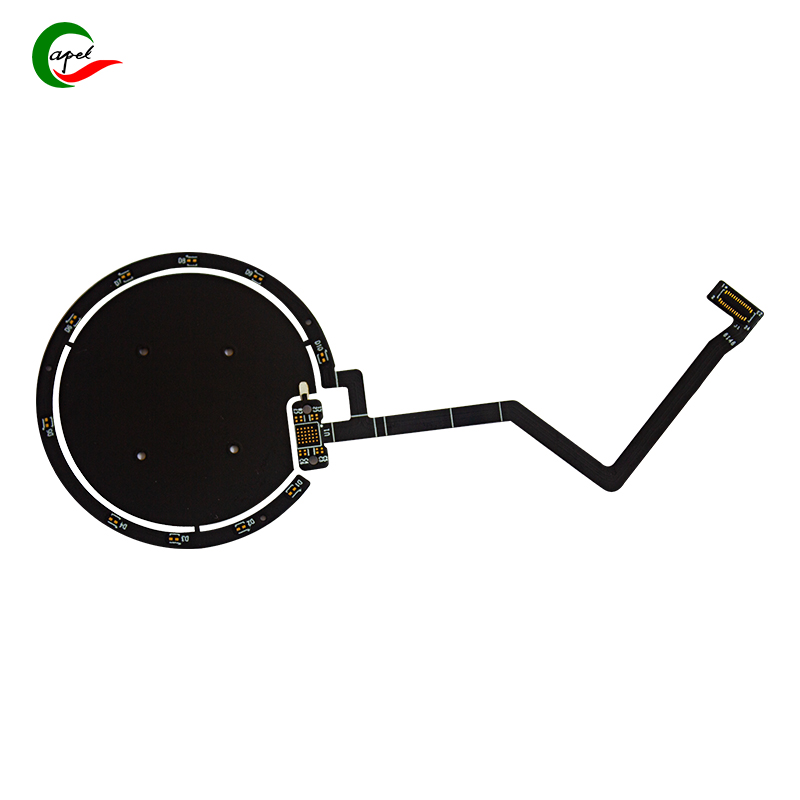Date: 2025-10-18
Creating microholes smaller than 20μm in flexible PCBs presents unique challenges that demand careful process optimization. Through our work with high-density interconnects and RF applications, we've developed methodologies that preserve hole wall integrity while maintaining production efficiency.
Understanding the Challenges of Micro-Drilling
The fundamental difficulty with sub-20μm holes lies in the energy concentration required. The extremely small cross-sectional area means even minor energy variations can cause significant damage. We've observed that excessive laser power rapidly vaporizes the polyimide material, leaving carbonized edges that compromise both electrical and mechanical properties.
Thermal management becomes critical at this scale. The polyimide substrate begins degrading around 300°C, and the heat from laser pulses can easily exceed this threshold if not properly controlled. Our testing has shown that pulse duration plays a more significant role than many engineers realize - longer pulses allow heat to spread through the material, causing collateral damage.
Material quality also impacts results significantly. We've found that substrates with impurities or inconsistent composition tend to absorb laser energy unevenly, creating localized hot spots that result in rough hole walls and microcracks.
Laser Parameter Optimization
Selecting the right laser parameters is crucial for success:
We typically use UV lasers for most applications in the 15-20μm range. The 355nm wavelength provides good absorption characteristics while maintaining reasonable operating costs. Our standard parameters include power settings between 3-6W with pulse widths of 10-30 nanoseconds.
For particularly demanding applications or thinner materials, we've had success with femtosecond lasers. The ultra-short pulse duration essentially eliminates thermal diffusion, resulting in remarkably clean hole walls. The trade-off comes in higher equipment costs and slower processing speeds.
The pulse stacking technique has proven valuable in our work. Instead of using a single high-energy pulse, we apply multiple lower-energy pulses. This approach reduces the instantaneous thermal load, minimizing carbonization and crack formation. In one medical sensor project, this method reduced carbonization by approximately 80% compared to conventional single-pulse drilling.
Material Preparation Strategies
Proper substrate preparation significantly improves drilling outcomes:
We implement oxygen plasma cleaning before drilling operations. The 30-40 second treatment effectively removes surface contaminants that could otherwise cause uneven energy absorption. This simple step has consistently improved hole quality across multiple projects.
Moisture control is another critical factor. We pre-bake substrates at 80-100°C for 30 minutes to remove absorbed moisture. The presence of water vapor during drilling can cause bubbling and wall irregularities that are particularly problematic in sub-20μm holes.
Material selection cannot be overlooked. We've standardized on high-purity polyimide materials from reputable suppliers. The consistency of these materials provides more predictable drilling characteristics compared to generic alternatives that may contain fillers or impurities.
Post-Processing Considerations
Even with optimized drilling parameters, some post-processing is often necessary:
We use low-power oxygen plasma treatment for descumming operations. The gentle plasma exposure effectively removes carbonized material without damaging the delicate hole walls. This approach has proven superior to chemical cleaning methods that can attack the polyimide material.
For physical debris removal, we employ soft nylon brushes with mesh densities between 500-1000. The flexibility of these brushes allows effective cleaning without scratching or enlarging the microholes. We avoid metal brushes entirely due to their potential for wall damage.
Inspection protocols include high-magnification microscopy at 500-1000x. This allows us to identify and address specific imperfections rather than applying blanket treatments that might unnecessarily process acceptable holes.
Equipment Maintenance and Calibration
Consistent results require well-maintained equipment:
We perform focus calibration every 500 holes to maintain optimal spot size. The 8-12μm focus range for UV lasers provides the necessary precision for sub-20μm features. Regular calibration prevents the gradual drift that can occur during extended production runs.
Positioning accuracy is verified daily. Our calibration standards require ≤2μm positioning error to ensure holes are drilled precisely where intended. Misalignment not only affects hole placement but can also cause wall damage as the laser scrapes against partially formed holes.
Vibration control has proven more important than many realize. We've installed active vibration isolation systems that reduce environmental vibrations to sub-micron levels. This investment has significantly improved hole consistency, particularly in facilities with nearby machinery or foot traffic.
Implementation Experience
Through numerous projects, we've identified several key success factors:
Process documentation is essential for repeatability. We maintain detailed records of successful parameter sets for different material combinations and hole sizes. This database has significantly reduced setup time for new projects.
Regular maintenance pays dividends in consistent quality. We've established preventive maintenance schedules that address potential issues before they affect production quality.
Operator training cannot be overlooked. The technicians operating the equipment need to understand not just how to run the machines, but why specific parameters matter. This knowledge enables them to identify and address issues more effectively.
By implementing these strategies, we've consistently achieved hole size deviations of 2μm or less while maintaining excellent wall quality. The approach has proven reliable across various applications including 5G modules, medical implants, and high-density sensor arrays where microhole quality directly impacts product performance and reliability.
related link:
Capel manufacturing PCBs since 2009. Professional technology and high-precision Printed Circuit Boards involved in Medical, IOT, UAV, Aviation, Automotive, Aerospace, Industrial Control, Artificial Intelligence, Consumer Electronics etc..